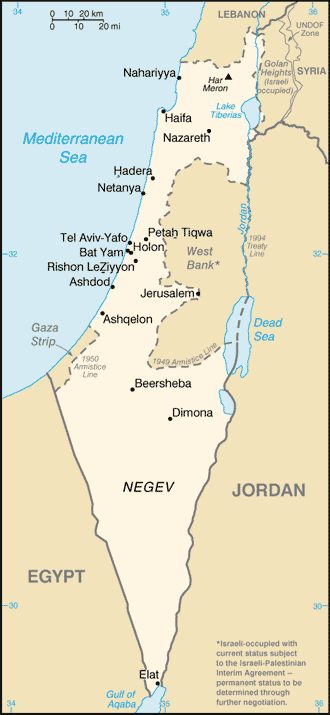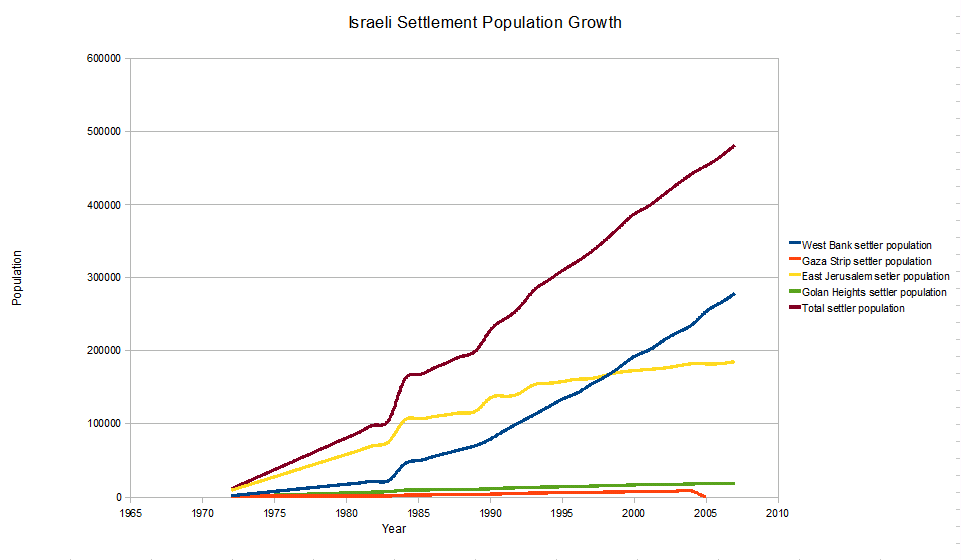|
EUBAM Rafah
The European Union Border Assistance Mission at the Rafah Crossing Point (EU BAM Rafah) was the EU's second Civilian Crisis Management Mission in the Palestinian territories, the other being the European Union Police Mission for the Gaza Strip (EU COPPS). The Mission was launched on 24 November 2005 to monitor operations at the Rafah Border Crossing between the Gaza Strip and Egypt, in accordance with the ''Agreed Principles for Rafah Crossing'' of 15 November 2005, part of the Agreement on Movement and Access (AMA), concluded by Israel and the Palestinian Authority. When the Mission was first deployed, it consisted of roughly 70 personnel including a special security team. On 13 June 2007, following the Hamas take over in the Gaza Strip, the EU BAM Head of Mission declared a temporary suspension of operations at the Crossing because the Palestinian Authority could not provide security for the EU monitors. During the 19 months while the EU monitors were present at the terminal (i.e ... [...More Info...] [...Related Items...] OR: [Wikipedia] [Google] [Baidu] |
Rafah Border Crossing
The Rafah Border Crossing ( ar, معبر رفح, Ma`bar Rafaḥ) or Rafah Crossing Point is the sole crossing point between Egypt and the Gaza Strip. It is located on the Gaza–Egypt border, which was recognized by the 1979 Egypt–Israel peace treaty. The original crossing point was named Rafah land port. Only passage of persons takes place through the Rafah Border Crossing. Traffic of goods is mostly diverted to the Kerem Shalom border crossing. The gates The ''Rafah Land Port'' became the primary border crossing between Egypt and Gaza, managed by the Israel Airports Authority until Israel had dismantled its Israeli settlement, settlements in Gaza on 11 September 2005 as part of Israel's unilateral disengagement plan, a disengagement plan. It subsequently became the task of the European Union Border Assistance Mission Rafah (EUBAM) to monitor the crossing. The ''Rafah land port'', known as the "Salah al Din Gate" is located at the original Rafah crossing on the Salah al-Din R ... [...More Info...] [...Related Items...] OR: [Wikipedia] [Google] [Baidu] |
Kerem Shalom Border Crossing
Kerem Shalom border crossing ( he, מעבר כרם שלום, ar, معبر كرم أبو سالم) is a border crossing at the junction of the Gaza Strip–Israel border and the Gaza–Egypt border. It is managed by the Israel Airports Authority, and is used by trucks carrying goods from Israel or Egypt to the Gaza Strip. Operation Until 2007, European monitors from the European Union Border Assistance Mission Rafah (EUBAM Rafah) used the Kerem Shalom crossing to get to the Rafah Border Crossing. The EUBAM heads a Liaison Office at Kerem Shalom which receives real-time video and data feeds of the activities at the Rafah crossing. The Liaison Office meets regularly to review implementation of the ''Agreed Principles for Rafah Crossing'', to resolve any dispute pertaining to the agreement, and to perform other tasks specified therein. The Liaison Office is manned by liaison officers from EUBAM, the Palestinian Authority, and the Government of Israel. Since 2010, NIS 75 million ... [...More Info...] [...Related Items...] OR: [Wikipedia] [Google] [Baidu] |
Gaza Strip
The Gaza Strip (;The New Oxford Dictionary of English (1998) – p.761 "Gaza Strip /'gɑːzə/ a strip of territory under the control of the Palestinian National Authority and Hamas, on the SE Mediterranean coast including the town of Gaza...". ar, قِطَاعُ غَزَّةَ ' , he, רצועת עזה, ), or simply Gaza, is a Palestinian exclave on the eastern coast of the Mediterranean Sea. The smaller of the two Palestinian territories, it borders Egypt on the southwest for and Israel on the east and north along a border. Together, the Gaza Strip and the West Bank make up the State of Palestine, while being under Israeli military occupation since 1967. The territories of Gaza and the West Bank are separated from each other by Israeli territory. Both fell under the jurisdiction of the Palestinian Authority, but the Strip is governed by Hamas, a militant, fundamentalist Islamic organization, which came to power in the last-held elections in 2006. Since then, Gaza ha ... [...More Info...] [...Related Items...] OR: [Wikipedia] [Google] [Baidu] |
Israeli–Palestinian Peace Process
The Israeli–Palestinian peace process refers to the intermittent discussions held by various parties and proposals put forward in an attempt to resolve the ongoing Israeli–Palestinian conflict. Since the 1970s, there has been a parallel effort made to find terms upon which peace can be agreed to in both the Arab–Israeli conflict and in the Palestinian–Israeli conflict. Some countries have signed peace treaties, such as the Egypt–Israel (1979) and Jordan–Israel (1994) treaties, whereas some have not yet found a mutual basis to do so. William B. Quandt, in the introduction of his book ''Peace Process'', says: Sometime in the mid-1970s the term peace process became widely used to describe the American-led efforts to bring about a negotiated peace between Israel and its neighbors. The phrase stuck, and ever since it has been synonymous with the gradual, step-by-step approach to resolving one of the world's most difficult conflicts. In the years since 1967 the emphas ... [...More Info...] [...Related Items...] OR: [Wikipedia] [Google] [Baidu] |
Council Of The European Union
The Council of the European Union, often referred to in the treaties and other official documents simply as the Council, and informally known as the Council of Ministers, is the third of the seven Institutions of the European Union (EU) as listed in the Treaty on European Union. It is one of two legislative bodies and together with the European Parliament serves to amend and approve or veto the proposals of the European Commission, which holds the right of initiative. The Council of the European Union and the European Council are the only EU institutions that are explicitly intergovernmental, that is, forums whose attendees express and represent the position of their Member State's executive, be they ambassadors, ministers or heads of state/government. The Council meets in 10 different configurations of national ministers (one per state). The precise membership of these configurations varies according to the topic under consideration; for example, when discussing ag ... [...More Info...] [...Related Items...] OR: [Wikipedia] [Google] [Baidu] |
European Union Border Assistance Mission To Moldova And Ukraine
The European Union Border Assistance Mission to Moldova and Ukraine (EUBAM Moldova and Ukraine) was launched in 2005. It promotes border control, customs, and trade norms and practices that meet European Union standards and serve the needs of its two partner countries. It is an advisory, technical body based in Odesa, Ukraine. It has a Liaison Office in Chișinău, Moldova, and six field offices; three on the Moldovan side of the joint border and three on the Ukrainian side. EUBAM activities are intended to promote economic development and enhance regional security. The Mission contributes to cross-border cooperation and confidence building, helping to improve efficiency, transparency, and security along the Moldova–Ukraine border. Aims The Mission's aims are to: * work with Moldova and Ukraine to harmonize border control, customs, and trade standards and procedures with those EU Member States * improve cross-border cooperation between the border guard and customs agencies and ... [...More Info...] [...Related Items...] OR: [Wikipedia] [Google] [Baidu] |
Kerem Shalom
Kerem Shalom ( he, כֶּרֶם שָׁלוֹם, ''lit.'' Vineyard of Peace) is a kibbutz in southern Israel. Located on the Gaza Strip-Israel-Egypt border, it falls under the jurisdiction of Eshkol Regional Council. In it had a population of . History The kibbutz was founded in 1967 adjacent to the triborder area by members of Hashomer Hatzair. Its name includes the word ''shalom'' since the members believed that the location would play a role in establishing peace and ending the Arab–Israeli conflict. ''Haaretz'' described it as "a small community with a communal-secular way of life, which marks holidays and holds culture evenings together and observes total mutual responsibility - in education, culture, health and its economy." According to Ilan Regev, the community manager, "the kibbutz, which was founded in 1967, fell apart in 1995, after members left, but in 2001, it was reestablished." In 2011, the kibbutz had 35 members and candidates (families and individuals), about 30 ... [...More Info...] [...Related Items...] OR: [Wikipedia] [Google] [Baidu] |
Political And Security Committee
The Political and Security Committee (PSC; sometimes referred to by its French ''COPS'' acronym derived from ''Comité politique et de sécurité'') is a permanent body within the European Union dealing with Common Foreign and Security Policy issues, including Common Security and Defence Policy.Europa glossary: Political and Security Committee (PSC) , accessed on April 21, 2008 PSC, which is based in , consists of ial-level representatives from all the EU Member States and usually meets twice per week. [...More Info...] [...Related Items...] OR: [Wikipedia] [Google] [Baidu] |
Palestinian Authority
The Palestinian National Authority (PA or PNA; ar, السلطة الوطنية الفلسطينية '), commonly known as the Palestinian Authority and officially the State of Palestine, Al Jazeera. Accessed 4 July 2021. is the Fatah-controlled government body that exercises partial civil control over West Bank areas "A" and "B" as a consequence of the 1993–1995 . ... [...More Info...] [...Related Items...] OR: [Wikipedia] [Google] [Baidu] |
Road Map For Peace
The Roadmap for peace or road map for peace ( he, מפת הדרכים ''Mapa had'rakhim'', ''Khāriṭa ṭarīq as-salāmu'') was a plan to resolve the Israeli–Palestinian conflict proposed by the Quartet on the Middle East: the United States, the European Union, Russia and the United Nations. The principles of the plan, originally drafted by U.S. Foreign Service Officer Donald Blome, were first outlined by U.S. President George W. Bush in a speech on 24 June 2002, in which he called for an independent Palestinian state living side by side with Israel in peace. A draft version from the Bush administration was published as early as 14 November 2002. The final text was released on 30 April 2003. The process reached a deadlock early in phase I and the plan was never implemented. Background The Second Intifada, which started in September 2000, was an escalation of mutual violence. In March 2002, in response to a wave of Palestinian suicide attacks, culminating in the "Passover ... [...More Info...] [...Related Items...] OR: [Wikipedia] [Google] [Baidu] |
Agreement On Movement And Access
The Agreement on Movement and Access (AMA) was an agreement between Israel and the Palestinian Authority (PA) signed on 15 November 2005 aimed at improving Palestinian freedom of movement and economic activity within the Palestinian territories, and open the Rafah Crossing on the Gaza–Egypt border. AMA was described as: ''″an agreement on facilitating the movement of people and goods within the Palestinian Territories and on opening an international crossing on the Gaza-Egypt border that will put the Palestinians in control of the entry and exit of people.″'' Part of the agreement was the ''Agreed Principles for Rafah Crossing''. Background and purposes Following the start of the Second Intifada in September 2000, Israel considerably restricted the movement of Palestinians within the Palestinian territories and between the territories and Israel and the rest of the world. At the Sharm el-Sheikh Summit on 8 February 2005, acting Palestinian President Mahmoud Abbas ple ... [...More Info...] [...Related Items...] OR: [Wikipedia] [Google] [Baidu] |



.jpg)

